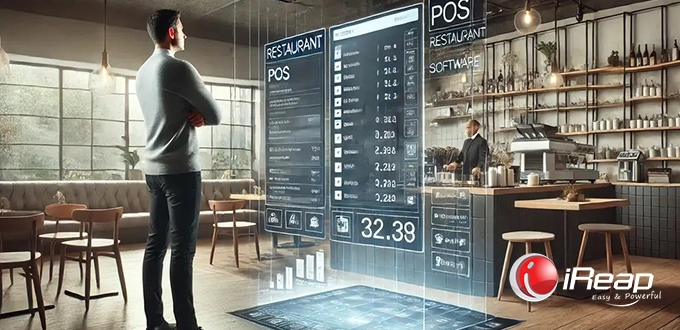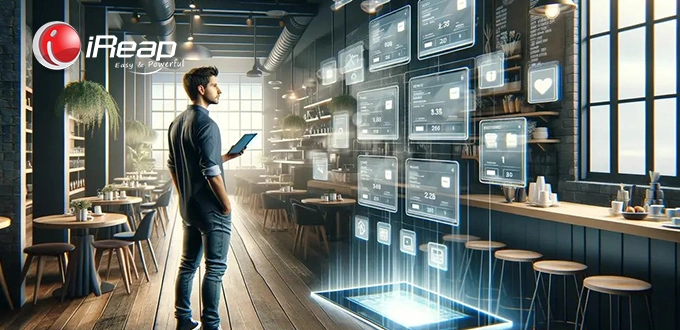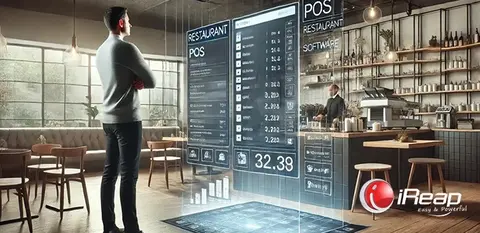
Managing a restaurant is no easy task. From ensuring the availability of ingredients, monitoring stock levels, to guaranteeing that every customer order is handled swiftly and accurately, it all demands meticulous attention.
One of the tools that many restaurant owners now rely on to simplify these various tasks is a point-of-sale (POS) application. A restaurant POS application not only streamlines the transaction process but also aids in stock management, financial reporting, and many other crucial aspects.
However, when choosing a POS application, cost often becomes a primary consideration. Thus, it’s essential to understand the pricing of restaurant POS applications and how to select the one that best suits your needs.
What is a Restaurant POS Application?
A restaurant POS application is specialized software designed to facilitate the management of daily transactions and operations within a restaurant.
With this application, restaurant owners and managers can efficiently handle various operational tasks such as taking orders, managing inventory, processing payments, and generating financial reports.
A POS application also helps reduce human error that may occur with manual record-keeping and provides real-time data that can be used to make better business decisions.
For restaurateurs looking to grow their business, a POS application is an invaluable investment for boosting efficiency and productivity.
Factors Influencing the Price of Restaurant POS Applications
The price of a restaurant POS application can vary significantly depending on several important factors. Understanding these factors will help you choose an application that not only fits your budget but also meets your restaurant’s operational needs.
1. Features Offered
POS applications that offer comprehensive features such as multi-outlet management, detailed financial reporting, inventory management, and integration with additional hardware typically come with a higher price tag.
Additional features like customer loyalty programs, data analytics, and offline functionality can also affect the cost.
Before deciding to purchase or subscribe to a POS application, consider which features are truly necessary for your business.
Also read: Essential Restaurant POS Features for Restaurateurs
2. Type of License
There are two common types of licenses offered by POS providers: monthly or yearly subscriptions, and one-time purchases (lifetime licenses).
Applications with monthly subscription fees are often more affordable upfront since you don’t need to make a large initial payment. However, subscription costs can add up over time, especially if you opt for packages with additional features.
Conversely, yearly subscriptions or lifetime licenses usually require a larger initial investment but can be more cost-effective in the long run.
3. Customer Support and Service
The quality of customer support also impacts the price of a POS application. Providers offering 24/7 customer support, user training, and assistance during initial setup may charge higher fees.
This support is crucial, particularly if you require immediate help to resolve technical issues that may arise during restaurant operations.
4. Integration with Other Devices
POS applications that can integrate with other hardware, such as receipt printers, barcode scanners, and EDC machines, tend to be more expensive.
The ability to integrate the POS application with other restaurant management systems or e-commerce platforms can also increase costs.
However, if your restaurant utilizes multiple hardware devices or systems, this integration is essential to ensure smooth and efficient operations.

Popular Restaurant POS Applications in Indonesia
Here are some of the popular restaurant POS applications in Indonesia, including iReap POS, along with a comparison of their prices and features.
iReap POS
- Price: The best choice at only Rp 500,000 per year.
- Features: This application offers various features such as multi-outlet management, stock tracking, financial reporting, integration with printers and scanners, and supports multiple payment methods. iReap POS also has an offline feature, so it can still be used even if the internet connection is interrupted.
- Pros: iReap POS is known for its competitive pricing and comprehensive features, making it an ideal choice for small and medium-sized businesses.
- Cons: It is currently not integrated with e-commerce platforms.
POS Application X
- Price: Around Rp 150,000 per month.
- Features: This application comes equipped with order management, detailed financial reporting, and integration with hardware such as printers and scanners. 24/7 customer support is also one of the application’s advantages.
- Pros: Responsive customer service and premium features like data analysis and real-time reporting make this application attractive for restaurants needing more detailed control.
- Cons: With a higher price, this application may offer features that aren’t all relevant for smaller businesses. Therefore, it’s important to ensure you truly need all the features provided before deciding to subscribe.
POS Application Y
- Price: Rp 2,000,000 for a lifetime license.
- Features: This application provides basic features such as sales recording, inventory management, and simple reporting.
- Pros: The main advantage of this application is the one-time payment for a lifetime license, eliminating the need for monthly subscription fees.
- Cons: Limited features may not meet the needs of growing businesses or restaurants with multiple outlets. If your business plans to expand, you may need to seek a more flexible solution.
How to Choose the Right POS Application for Your Restaurant
Selecting the right POS application largely depends on your business needs and budget. Here are some tips to help you make the right decision:
1. Consider Your Business Scale
For small restaurants, an application with basic features may suffice. However, for larger restaurants with multiple outlets, you may need an application with multi-outlet management and more detailed financial reporting.
Also, consider whether your business plans to expand shortly, as this may affect your need for features and capabilities in a POS application.
2. Evaluate Feature Requirements
Make a list of the features you truly need. Do you require detailed inventory management? Is comprehensive financial reporting critical to your business operations? Also, consider whether you need integration with other hardware or restaurant management systems.
3. Budget and Long-Term Cost Projections
Consider the total cost in the long term, including subscription fees and additional costs for advanced features. Don’t just focus on the initial cost, but also think about how much you will pay over time, especially if you choose an application with a subscription model.
Conclusion
Choosing the right restaurant POS application is a crucial step in enhancing operational efficiency and maximizing profits.
By considering the price, features, and your business needs, iReap POS could be the right choice for many restaurant owners in Indonesia. Additionally, it’s important to conduct thorough research and comparison before making a final decision.
Remember, investing in the right POS application will help you manage your business better and provide a superior experience for your customers.
This article aims to provide a useful guide in selecting the POS application that best fits your needs and budget.



